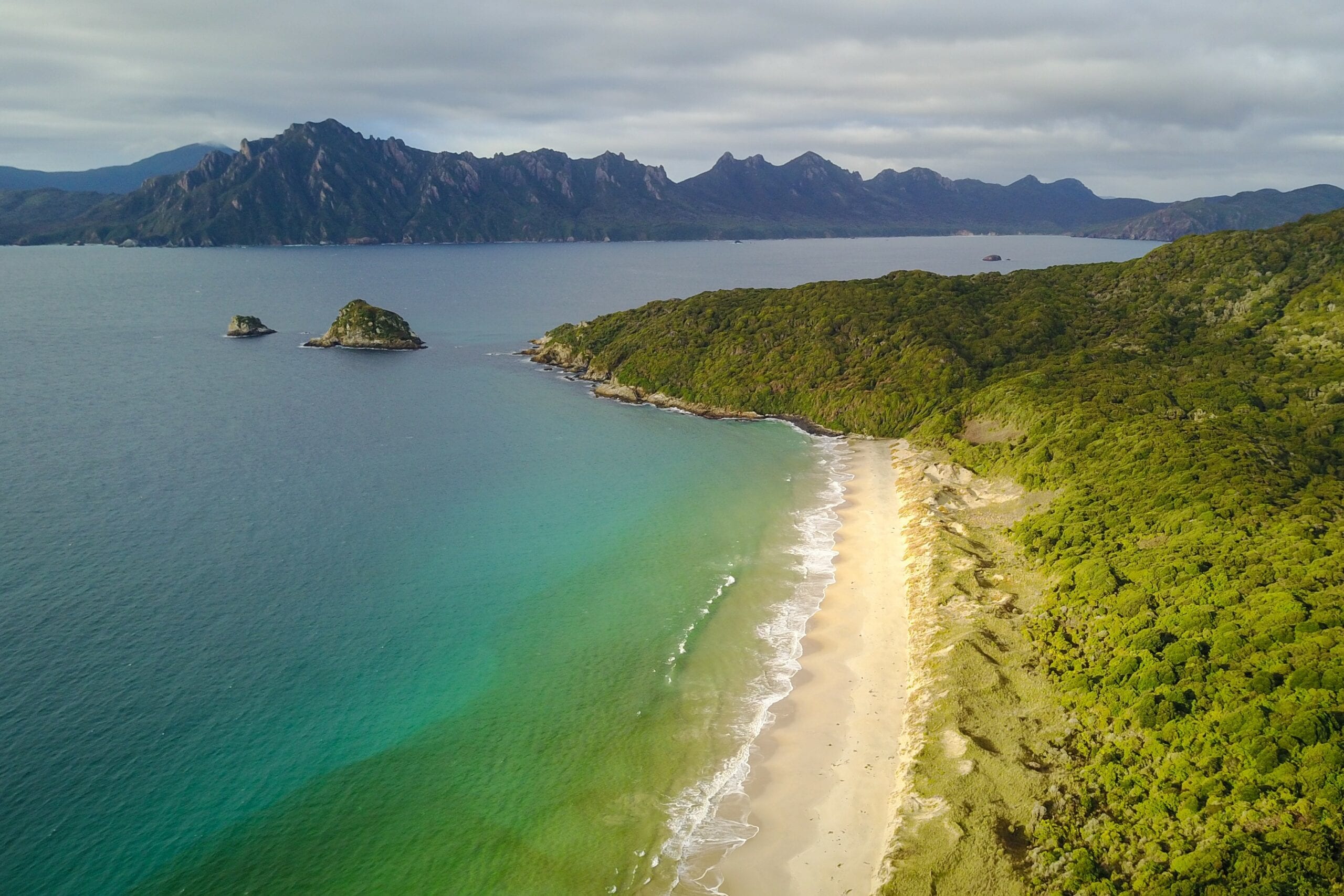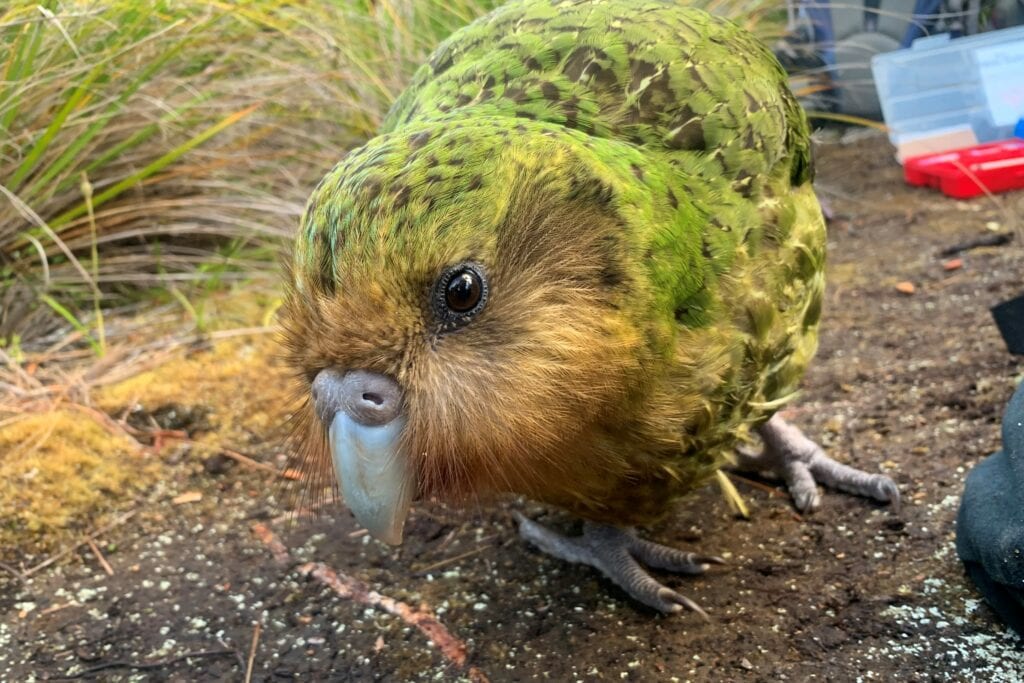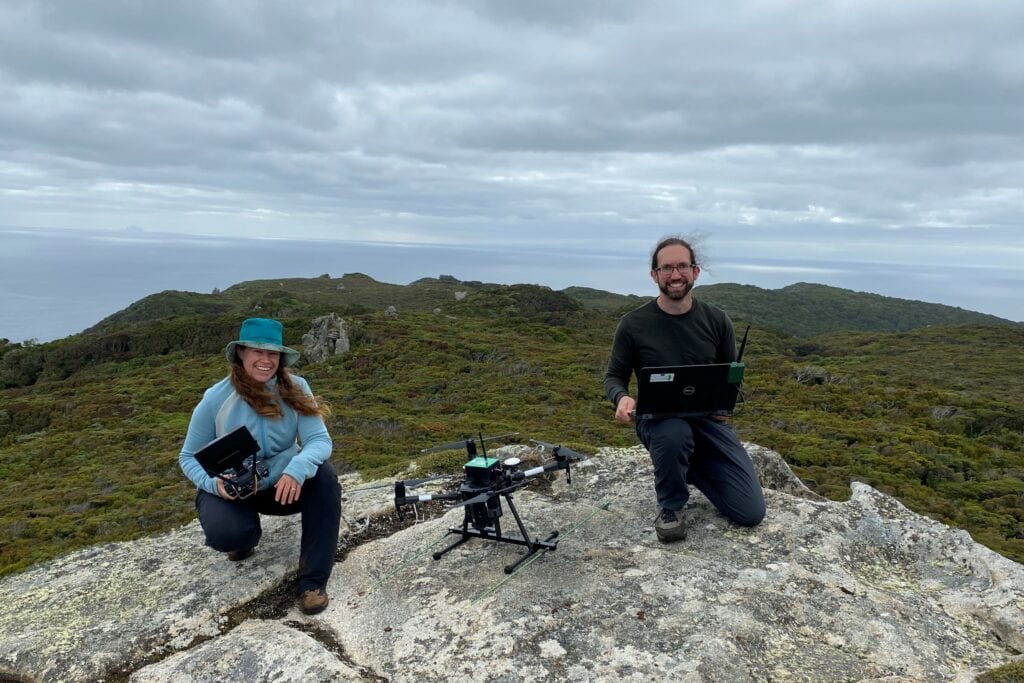
News
Tracking the Kakapo – One of the world’s most endangered birds
Just weeks before Australia’s COVID-19 lockdown took effect, Wildlife Drones travelled to New Zealand’s Whenua Hou Island to trial tracking the critically endangered Kakapo.
With just over 200 birds remaining, monitoring the health and wellbeing of each individual is essential to securing the species’ future. That is why the New Zealand Department of Conservation (DOC) were excited to see Wildlife Drones’ radio-tracking drone technology in action.
Journey to the Island
It was 4:30am when we crawled out of bed. We had arrived in New Zealand the day earlier and we now had to pass a routine quarantine inspection before squeezing all of our drone gear into a tiny Cessna. All in the pouring rain!
The light slowly seeped through the fog as we took off over the grey coastline. As we hurtled through the air, the clouds parted to reveal the majestic Whenua Hou Island off in the distance. As we drew closer to the Island, the speeding Cessna tilted sideways toward the long stretch of beach.
“It’s all clear,” our pilot announced, as he began his descent. He had made sure that there weren’t any lazing sea lions or clumps of seaweed blocking our beach runway.
Upon landing, we proceeded to unload our equipment from the plane. The sun had now risen over the coastline and there was work to be done!
To Track a Kakapo
Each Kakapo is fitted with a wildlife transmitter that enables their movements to be monitored and tracked. But due to Whenua Hou Island’s rugged landscape, it can be a time-consuming job to locate each individual on foot.
With our drone, we could survey large parts of the Island in a matter of minutes. From the air, we could detect signals from multiple birds and even find ones in areas that were too dangerous to access on foot.
At one point, we clambered up muddy paths to reach the Island’s highest peak. Here, we were able to locate up to 40 tagged birds simultaneously. That is equivalent to 19% of the global Kakapo population! The view from above made us realize just how daunting it must be to have to regularly radio-track the birds in such unforgiving terrain.
An Unforgettable Experience
We were fortunate to work closely with Dr Andrew Digby, who leads the DOC’s Kakapo Recovery Team. We also had the pleasure of learning about Whenua Hou’s rich cultural heritage from Estelle Pera-Leask, a local Iwi community rep who has strong family ties to the Island. She joined the project to observe how the kakapo responded to drones. In fact, the kakapo seemed more curious rather than bothered by the drone!
To me, this project was incredibly rewarding, both personally and professionally. It was a real highlight to see the excitement in the eyes of the researchers as they witnessed what is now possible thanks to our radio-tracking technology. It was also amazing to meet one of the incredibly charismatic Kakapo who we were able to track with our drone.
To learn more about the project and our latest work with the DOC, check out the case study.



